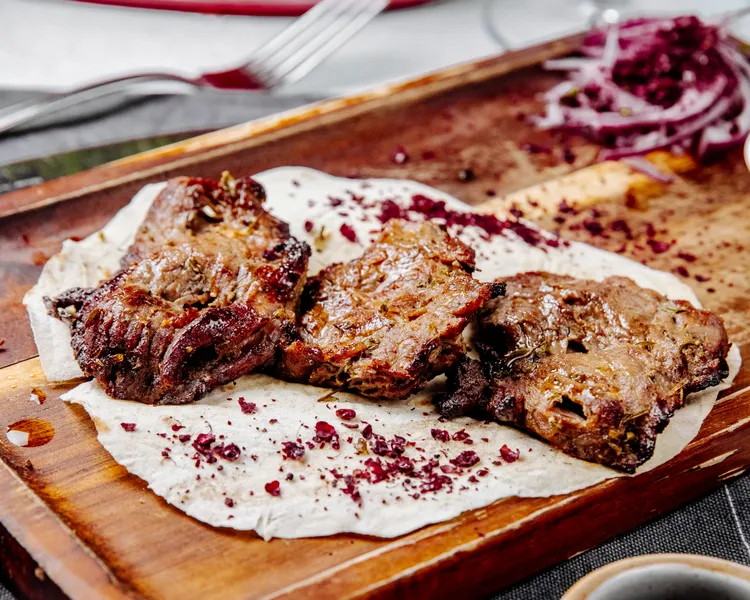Fitness Is Earned in the Kitchen in Everyday Meals, Not Just the Gym
When people talk about “getting healthy,” the first thing that usually comes to mind is the gym. Treadmills, dumbbells, fitness trackers, and grueling workouts. We’re bombarded with messages that equate health with exercise, sweat, and discipline. And while movement is undeniably important, there’s a fundamental truth that often gets overlooked: Healthy Living Starts at Home - In Your Kitchen. In fact, you can’t outrun a poor diet. No matter how hard you work out, if your meals are built on processed, nutrient-poor foods, your body won’t function - or feel - its best.

We’ll explore why the kitchen is your real wellness headquarters, how everyday food choices impact everything from energy to sleep to stress, and how to make eating well practical, enjoyable, and sustainable.
1: The Myth of "Workout = Health"
1.1 The Calorie Fallacy
Let’s bust a popular myth: you can’t “burn off” bad food. One slice of pizza might take 45 minutes of jogging to offset. A sugary frappuccino could equal an hour of intense cycling. But food isn’t just about calories in vs. calories out.
What you eat affects your hormones, digestion, immune system, and brain chemistry - in ways exercise alone can’t fix.
1.2 Gym Progress Starts in the Kitchen
Even if your goal is fitness-related - building muscle, increasing stamina, losing fat - nutrition is the foundation. Without it, your workouts won’t yield the results you want. Poor nutrition:
- Reduces recovery
- Weakens performance
- Increases inflammation
- Sabotages muscle growth
Want better results in the gym? Start by upgrading what’s on your plate.
2: Every Meal Is a Micro-Decision That Shapes Your Health
2.1 You Eat 3-5 Times a Day - That Adds Up Fast
You may hit the gym 3-4 times a week, but you eat every single day. That’s over 1,000 meals per year - each one a chance to nourish or neglect your body.
Wellness isn’t built in bursts of motivation. It’s built through daily, consistent choices:
- What you cook
- What you snack on
- What you keep in your pantry
- What you reach for when you’re tired, stressed, or busy
2.2 Food Is More Than Fuel - It’s Information
Your body doesn’t just burn food - it responds to it. The quality of your food affects:
- Your gut health, which influences immunity and mood
- Your brain, including memory, focus, and anxiety
- Your energy levels throughout the day
- Your hormonal balance, including insulin and cortisol
- Your inflammatory levels, which affect pain and chronic disease
Eating well is not about restriction - it’s about giving your body the tools to thrive.
3: The Kitchen Is Your Most Powerful Wellness Tool
3.1 Where Real Transformation Happens
Gyms can build strength, speed, and endurance - but the kitchen builds:
- Metabolic health
- Hormonal harmony
- Mental clarity
- Emotional resilience
- Immune defense
You don’t need fancy supplements or expensive biohacks. You just need a stove, a few whole ingredients, and some simple recipes.
“Let food be thy medicine.” - Hippocrates
3.2 Cooking = Control
When you cook, you know what’s in your food. You can avoid:
- Hidden sugars
- Excess sodium
- Refined oils
- Artificial preservatives
You also gain the power to optimize:
- Portion sizes
- Macronutrient balance
- Freshness and seasonality
- Texture and flavor preferences
4: Building Wellness One Meal at a Time
4.1 Start Simple
You don’t need to become a gourmet chef. Start with:
- One balanced meal a day
- One new recipe a week
- One meal prep session per weekend
4.2 Focus on These Key Habits
- Prioritize protein: Helps with satiety, muscle maintenance, and blood sugar balance.
- Eat colorful plants: Fruits and veggies are full of fiber, vitamins, and antioxidants.
- Use healthy fats: Olive oil, avocado, nuts, and seeds support brain and heart health.
- Minimize ultra-processed foods: The less your food is messed with, the better.
- Stay hydrated: Often overlooked, but crucial to energy and digestion.
4.3 Create a Meal Framework (Not a Meal Plan)
Forget rigid meal plans. Instead, build flexible formulas:
- Breakfast: Protein + fiber + healthy fat (e.g., eggs + greens + avocado)
- Lunch: Grain + veggies + protein + dressing (e.g., quinoa bowl)
- Dinner: Protein + roasted veggies + optional starch
- Snacks: Whole-food-based, minimally processed
5: Eating Well in the Real World
5.1 Busy Schedule? No Problem.
- Use batch cooking (cook once, eat 2-3 times)
- Keep your kitchen stocked with quick staples (eggs, canned beans, frozen veggies)
- Build a list of 5 “go-to” meals you can make in 15 minutes or less
5.2 Dining Out Smartly
You don’t have to avoid restaurants. Just follow these guidelines:
- Scan the menu for veggie-based sides
- Ask for dressings/sauces on the side
- Choose grilled over fried
- Eat mindfully, not restrictively
5.3 Mindful Eating = Wellness Amplified
It’s not just what you eat. It’s how you eat.
- Sit down to meals (not on your phone)
- Chew slowly and savor
- Stop when you’re 80% full
These habits improve digestion, nutrient absorption, and satisfaction.
6: Long-Term Wellness Is Built, Not Bought
6.1 It's a Lifestyle, Not a Challenge
No 30-day cleanse or 6-week program can replace lifelong habits. Wellness is a collection of small, repeatable actions - done with love, not punishment.
6.2 Be Consistent, Not Perfect
You don’t need to eat clean 100% of the time. A better goal?
- Eat real food most of the time
- Move your body often
- Prioritize sleep and stress management
- Enjoy food without guilt
Progress over perfection wins every time.
Bring the Power Back to Your Plate
If you want to get stronger, feel better, think more clearly, and reduce your risk of disease - it starts in your kitchen, not the gym.
Every time you make a meal, you’re making a choice: to nourish your future self or to feed short-term cravings. You don’t need a personal chef, a six-pack, or a diet plan. You need real ingredients, simple skills, and a commitment to care for your body.
The gym is a tool. But the kitchen? That’s where the magic happens.
Bonus: Kitchen Wellness Starter Kit
Want to get started today? Here’s a simple shopping list of powerful staples:
Proteins:
- Eggs
- Chicken thighs
- Canned tuna or salmon
- Tofu or tempeh
- Lentils and black beans
Veggies (fresh or frozen):
- Spinach
- Broccoli
- Zucchini
- Sweet potatoes
- Bell peppers
Healthy fats:
- Avocado
- Olive oil
- Chia seeds
- Almonds
Grains and carbs:
- Brown rice
- Oats
- Quinoa
- Whole wheat pasta
Flavor boosters:
- Garlic
- Ginger
- Fresh herbs
- Lemon juice
- Tamari or coconut aminos
Remember:
You don’t need to live in the gym to live a healthy life.
You just need to come home to your kitchen.
Your health starts on your plate - and it starts today.









